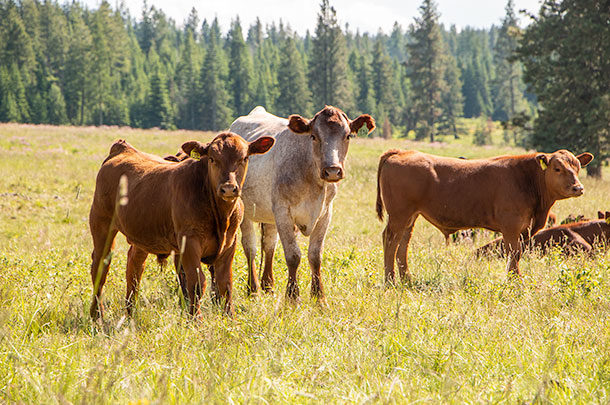Despite major differences in cattle production nationally, there’s one thing I’m comfortable generalizing: Cattle producers do not have an abundance of time, labor or resources.
Regardless of the type of cattle you raise, purpose of your operation, amount of land you own, etc., the pace of today’s world makes this statement true. The good news is, just as society’s pace has increased, so has our access to technology and innovation in the cattle industry. The key is to take advantage of those new ideas that make sense with regard to improving efficiency and economic sustainability.
Today, I want to focus on one nutritional category that, in my opinion, few cow-calf and stocker operators have taken advantage of in recent years – limiter technologies.
What is a limiter technology?
A limiter technology, or limiter for short, is used in a product offered to cattle on a free-choice basis that is designed to induce cattle to self-regulate the feed they consume, thus controlling or limiting their feed intake. A limiter can be a single ingredient or combination of ingredients that help regulate intake, and there are a number of different limiter products on the market today. Each is designed with unique factors that enable the technology to control intake, including a complex combination of fill, the product’s palatability, chemostatic response, cattle’s access to the product, and the social and physical environment the cattle are in.
There is not a “one size fits all” approach to feeding cattle a limiter, so consulting with your local nutritionist, feed representative, extension agent or other expert with limiter experience is highly recommended before deciding if a limiter product is right for you.
What cattle should be fed a limiter?
Limiter technology can be used in a number of production scenarios with different groups of cattle. Most commonly, I see limiters used to develop young bulls and heifers. Producers have also used limiters to successfully background cattle, as a stocker supplementation, creep feeding and as a protein supplement.
It’s crucial to know what your goals are for a specific group of cattle when evaluating your nutrition program. Once you’ve decided upon those goals, you should work with a professional to understand if a limiter can help you achieve them.
Why feed a limiter?
The benefits of using a limiter technology in your nutrition program will vary based on your specific scenario. Generally, producers will experience one or more of the following as a positive outcome of feeding a limiter:
- Labor and timesavings by not having to hand-feed a group of cattle
- Maximized forage efficiency as the limiter feed can provide more energy and/or protein than the available forage can support
- Achievement of performance goals when you have a group of cattle that need to achieve a certain rate of gain over a defined time period
Limiters are not a replacement for good management, but can be a useful tool to help you free up resources while still driving toward the big goal of profitability.
How do I know if it’s right for me?
As mentioned before, I highly recommend you engage a local professional to evaluate whether a limiter product is a good fit for your nutrition program and cattle. Flexibility is a huge benefit of limiter technologies, but also can be detrimental if you are incorporating the technology blindly. If considering a limiter, a few things to ask yourself include:
- Do I have an abundance of forage (hay or grass) readily available wherever these cattle will be fed?
- Do I have access to, or am I willing to invest in, equipment needed to feed the cattle (bulk feeder, bunk, etc.)?
- Do I have the resources to check cattle at least every few days to ensure they’re adapting well to the feed and do not run out?
- Am I approaching the idea of feeding a limiter technology with realistic expectations of the feed’s performance?
If your answer to those questions is “yes,” a limiter might be a good fit.
Knowledge is power, and step one to investigating a new technology or innovation is understanding, generally, what it is or does. Hopefully this has accomplished that for you with respect to limiter technologies, which leads to step two – find an expert, and pick their brain to learn more.











